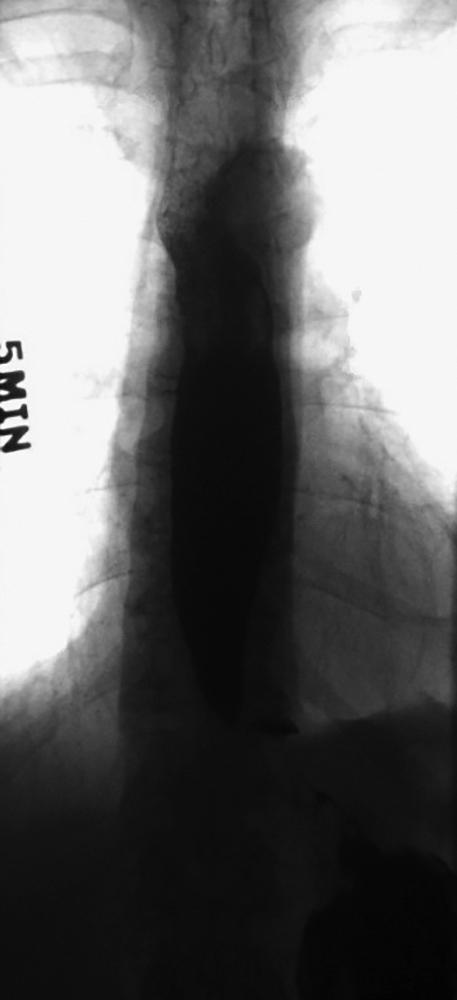Physical Address
304 North Cardinal St.
Dorchester Center, MA 02124
Achalasia is a rare disorder of the esophagus. From the Greek khalasis (to loosen, and Latin a -, without), the disease is characterized by dysphagia and reflux symptoms secondary to inability of the lower esophageal sphincter (LES) to relax, with varying degrees of esophageal dysmotility. Idiopathic achalasia secondary to immune-mediated chronic ganglionitis of the myenteric plexus is the most common variant; rarer causes of achalasia include pseudoachalasia resulting from obstruction after foregut surgery, malignant infiltration of the gastroesophageal (GE) junction, or as a sequelae of paraneoplastic disease, or after destruction of the myenteric neurons by Trypanosoma cruzi in Chagas disease. Still, idiopathic achalasia remains rare, with an incidence of 1.6 cases per 100,000 patients.
A barium esophagram in an achalasia may show a classic “bird’s beak” appearance with delayed emptying of timed contrast ( Fig. 11.1 ). However, up to one-third of patients with achalasia may not have abnormal esophagram findings. However, this gives the surgeon information about the esophageal anatomy, for example, if the patient has a hiatal hernia or a tortuous esophagus. Patients should undergo an endoscopy to rule out pseudoachalasia or an obstructing mass as cause of their obstruction. However, as with the esophagram, up to one-third will have a nondiagnostic esophagogastroduodenoscopy (EGD), so this is not the diagnostic test of choice for achalasia.

The gold standard for diagnosis remains high-resolution esophageal manometry, which will reveal high-resting pressure of the LES (>45 mm Hg); failure of LES relaxation with swallow (residual pressure > 10 mm Hg); as well as aperistalsis of the esophageal body (“classic” achalasia, or type I), pan-esophageal pressurization (type II), or spastic contractions (type III).
Become a Clinical Tree membership for Full access and enjoy Unlimited articles
If you are a member. Log in here